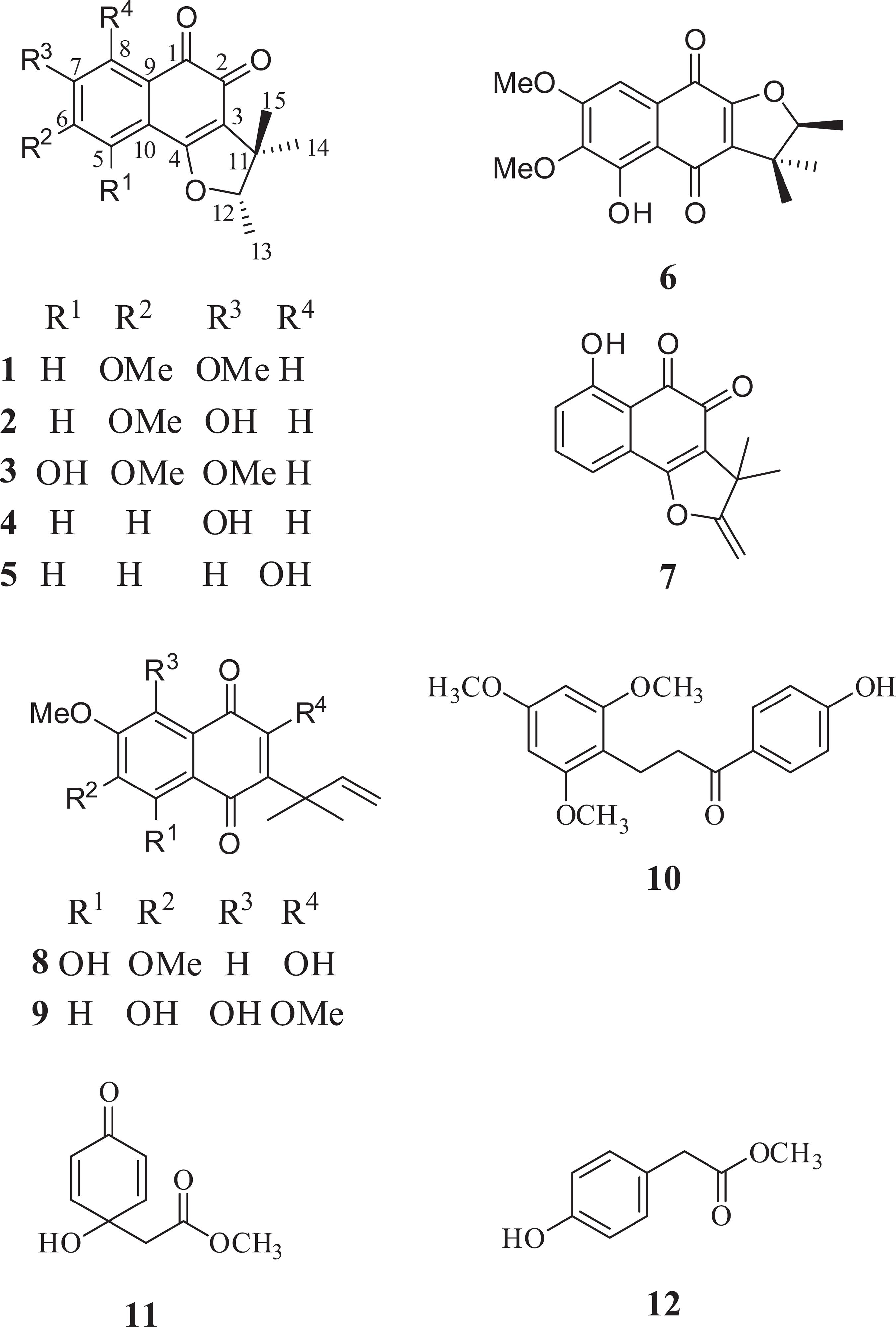Phytochemical study of Sinningia reitzii (Gesneriaceae) led to the isolation of three new naphtoquinones, 6,7-dimethoxydunnione, 7-hydroxy-6-methoxydunnione, and 5-hydroxy-6,7-dimethoxydunnione from the tubers, together with four known compounds, 7-hydroxydunnione, 8-hydroxydunnione, 5-hydroxy-6,7-dimethoxy-α-dunnione, and 8-hydroxydeydrodunnione. Aerial parts furnished five known compounds, 5-hydroxy-6,7-dimethoxydunniol, 6,8-dihydroxy-7-methoxy-2-O-methyldunniol, loureirin B, jacaranone, and methyl 4-hydroxyphenylacetate. Compounds 8-hydroxydunnione, 5-hydroxy-6,7-dimethoxy-α-dunnione, 8-hydroxydeydrodunnione, 5-hydroxy-6,7-dimethoxydunniol and 6,8-dihydroxy-7-methoxy-2-O-methyldunniol had been previously reported in the tubers of S. reitzii. Density functional theory was used to assign the absolute configuration of compounds 6,7-dimethoxydunnione, 7-hydroxy-6-methoxydunnione 5-hydroxy-6,7-dimethoxydunnione, 7-hydroxydunnione, 8-hydroxydunnione, 5-hydroxy-6,7-dimethoxy-α-dunnione. Compounds 6,7-dimethoxydunnione, 8-hydroxydunnione, 5-hydroxy-6,7-dimethoxy-α-dunnione and 8-hydroxydeydrodunnione were evaluated for cytotoxicity against PC3 (prostate), SKMEL 103 (melanoma), and HeLa (cervix) human cancer, and 3T3 fibroblast cell lines, using the 3-(4,5-dimethyl-2-thiazolyl)-2,5-diphenyl-2H-tetrazolium bromide (MTT) assay. Compound 6,7-dimethoxydunnione displays cytotoxic activity against all the tumor cell lines tested (half maximal inhibitory concentration, IC50, 4.47-26.2 µmol L-1), and was inactive against 3T3 fibroblasts (IC50 > 100 µmol L-1). Compounds 8-hydroxydunnione, 5-hydroxy-6,7-dimethoxy-α-dunnione and 8-hydroxydeydrodunnione were inactive against all tested cell lines.
Keywords:
Gesneriaceae; Sinningia reitzii; naphthoquinones; cytotoxic activity

